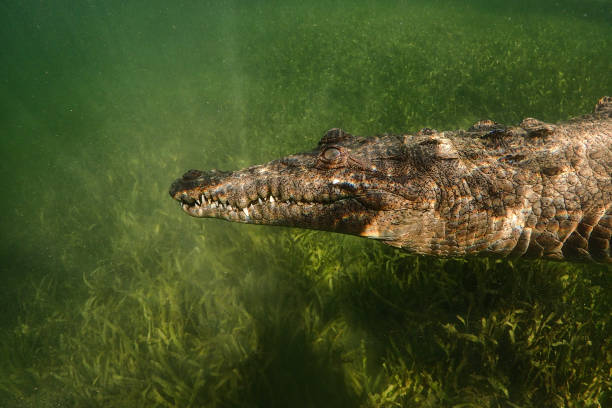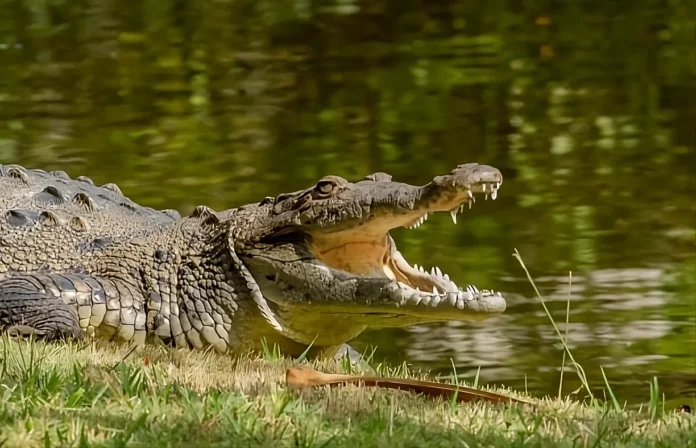Table of Contents
Scientific Classification
| Kingdom | Animalia |
| Phylum | Chordata |
| Class | Reptilia |
| Order | Crocodylia |
| Family | Crocodylidae |
| Genus | Crocodylus |
| Species | Crocodylus acutus |
| Scientific Name | Crocodylus acutus |
Description
The American crocodile (Crocodylus acutus) is a large reptile known for its powerful jaws and sturdy body, thriving in both aquatic and terrestrial environments. As one of the largest members of the crocodilian family, it can reach lengths of up to 20 feet (6 meters), although most individuals typically measure between 13 and 16 feet (4 to 5 meters). Males tend to be larger than females. This species can be distinguished from its close relative, the American alligator, by its narrower snout and olive-gray coloration. Its lighter, scaly skin offers excellent camouflage in its natural surroundings. The positioning of its eyes, nostrils, and ears on top of its head allows it to remain mostly submerged while keeping an eye out for both prey and potential threats.
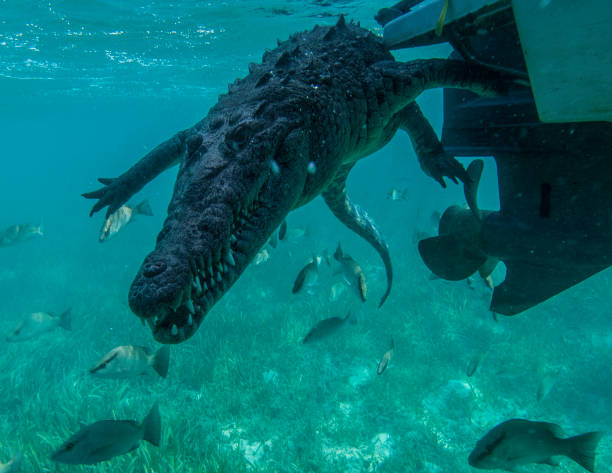
Distribution
The American crocodile inhabits the coastal regions of the Americas, with its range stretching from southern Florida in the United States down to South America. Many people reside near the coast in countries like Cuba, the Dominican Republic, Costa Rica, and Colombia. In the U.S., its primary habitat is in southern Florida, particularly in the Everglades and the Florida Keys.
Habitat
American crocodiles are quite adaptable creatures. Unlike alligators, which favor freshwater environments, these crocodiles can thrive in brackish and saltwater. You can frequently find them in coastal areas such as mangroves, estuaries, river mouths, lagoons, and saltwater marshes. They are strong swimmers, capable of navigating between freshwater and saltwater with ease. Mangrove swamps offer them shelter, while sandy beaches and riverbanks serve as perfect nesting sites.
Diet
The American crocodile is a carnivorous predator with a diverse diet. As an apex predator, it preys on a range of animals, including fish, birds, reptiles, and small to medium-sized mammals. Younger crocodiles tend to consume insects, crustaceans, and amphibians, while adults target larger prey such as fish, turtles, wading birds, and occasionally farm animals. They are known for their ambush tactics, patiently waiting before executing swift and powerful strikes on unsuspecting prey.
Behavior
American crocodiles tend to be solitary and territorial creatures. They are primarily active at night when they hunt for food. During the day, they can often be found basking in the sun to help regulate their body temperature. Generally, American crocodiles are quite shy and tend to avoid humans, which sets them apart from their more aggressive relative, the Nile crocodile. However, if they feel threatened, they will vigorously defend their territory. They are also known to travel long distances over land in search of new habitats or food.
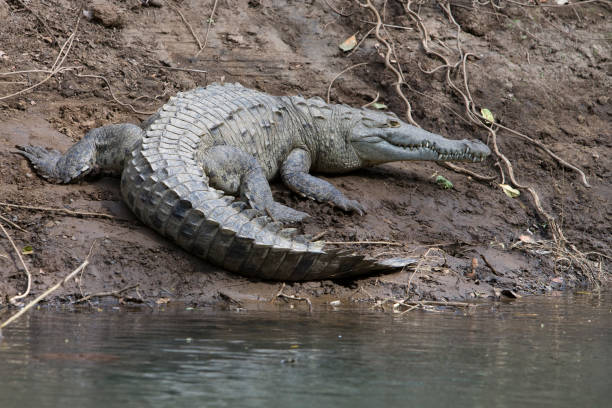
Lifespan
In the wild, American crocodiles typically live between 50 to 70 years. However, in captivity, they are protected from predators and have a consistent food supply, which can extend their lifespan even further. Factors such as their environment, availability of food, and threats from human activities all play a role in determining their longevity.
Reproduction and Lifecycle
American crocodiles breed during the dry season, typically from January to May. Males establish their territories and compete for the chance to mate with females. After mating, the female lays between 30 and 60 eggs in a nest made of sand or soil, often located near the water’s edge. She diligently guards the nest for about 75 to 90 days until the eggs hatch. Once the hatchlings emerge, the mother helps them by gently carrying them to the water. Unfortunately, only a small percentage of these young crocodiles survive to adulthood, primarily due to predation from birds, fish, and other reptiles, despite her protective efforts. Those that do make it grow quickly and become the top predators in their ecosystems.
Predators
Adult American crocodiles have few natural predators. However, hatchlings and juveniles face many threats. Birds, large fish, snakes, and other crocodilians prey on the young. Humans mainly hunt adult American crocodiles. They target them for their skins, meat, and body parts. Habitat destruction and illegal poaching have also contributed to declines in population numbers.
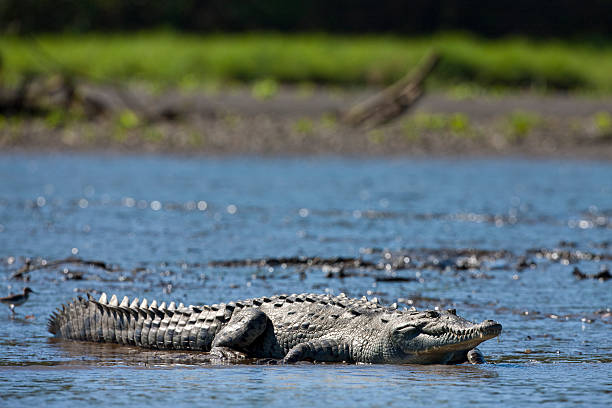
Adaptations
American crocodiles have developed several adaptations that enable them to thrive in various environments:
Saltwater Tolerance: They possess specialized salt glands in their tongues that allow them to excrete excess salt, making it possible for them to inhabit ocean waters.
Camouflage: Their skin coloration helps them blend into their surroundings, which aids in ambushing prey effectively.
Powerful Jaws: They boast one of the strongest bites in the animal kingdom, capable of crushing bones and hard shells with ease.
Efficient Digestion: Their stomachs contain strong acids that assist in breaking down bones and other tough materials.
Nictitating Membrane: A clear third eyelid shields their eyes while submerged, enhancing their visibility.
Ability to Hibernate: In colder conditions, they enter a state of dormancy, burrowing into the mud to conserve energy.
Conservation Status
The American crocodile is classified as Vulnerable on the IUCN Red List. While conservation efforts have helped stabilize certain populations, they continue to face threats from habitat destruction, climate change, and conflicts with humans. In Florida, populations are on the rise due to legal protections, but they still require careful monitoring. Key conservation strategies include:
Protection of Habitats: Creating national parks and reserves to safeguard their natural environments.
Legal Protections: Implementing hunting bans and restrictions on the crocodile trade has contributed to a decrease in poaching.
Public Awareness Campaigns: Informing communities about the significance of coexisting with crocodiles.
Captive Breeding Programs: Some organizations breed crocodiles in captivity and subsequently release them into the wild to bolster population numbers.
These conservation initiatives are aiding the American crocodile in thriving within its habitat, yet challenges persist.
Conclusion
The American crocodile is an intriguing and often misunderstood reptile. As a top predator, it is essential for maintaining the balance of its ecosystem. Conservation efforts have made significant strides in protecting this remarkable species, even in the face of serious human threats. We can ensure that the American crocodile continues to thrive for future generations by safeguarding its habitat and encouraging coexistence.
